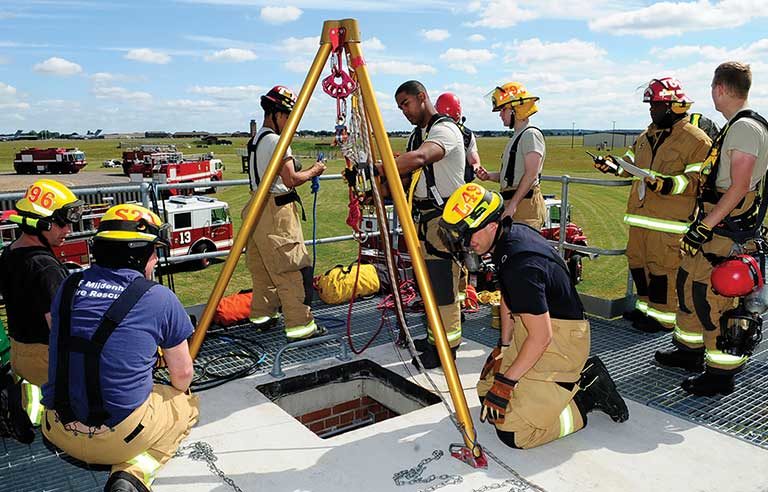Confined spaces and rescue operations
A look at some common assumptions

‘I’ve done this a thousand times and I’ve never gotten hurt. I’ll be all right.’
Worker assumptions can be dangerous – particularly when confined spaces are involved. That’s because of the potential severity of the hazards associated with them and the need to quickly extract incapacitated workers.
Unless confined space hazards are respected and rescues are planned for and practiced, incidents can prove deadly for workers and rescuers alike.
From 2012 to 2017, the number of annual confined space fatalities in the United States nearly doubled – to 166 from 88, according to the most recent data available from the Bureau of Labor Statistics. (See “Confined space fatalities in recent years.”)
“Few workplace areas present as many potentially serious hazards as confined spaces,” said David Consider, senior workplace safety consultant and trainer at the National Safety Council, “and without dedicated procedures for safe entry and monitoring employees within the confined space, catastrophic events can occur.”
‘I know what a confined space is.’
For workers who are experienced or savvy, this may be true. However, the sheer variety of confined spaces, along with regulations – often purposefully vague – can cause confusion and difficulties.
For example, trenches and ditches can be considered confined spaces “when access or egress is limited,” the Canadian Center for Occupational Health and Safety says. Other confined spaces include silos, vessels, storage bins, hoppers, vaults and pits, according to OSHA’s general industry regulations. In OSHA’s definition, a confined space must have each of the following characteristics:
- Is large enough and configured so employees can enter and perform assigned work
- Has limited or restricted means of entry or exit
- Is not designed for continuous occupancy
That type of confined space differs from a “permit-required confined space,” which has at least one of the following characteristics:
- Contains or has the potential to contain a hazardous atmosphere
- Has a material that could engulf someone who enters
- Is configured in such a way that an entrant could become trapped or asphyxiated as a result of “inwardly converging walls or by a floor which slopes downward and tapers to a smaller cross-section”
- Has any other recognized serious safety or health hazard
“Many employers simply fail to consider or understand that certain work areas constitute a confined space, hence the need for a competent job hazard analysis,” Consider said. He recommends organizations partner with a third-party consultant or industry peer group and conduct routine audits/assessments. This can help identify the hazards that are often unique to the confined spaces at their locations.
“They should ask their safety professional colleagues how they manage (confined spaces) – other people that are seemingly doing it well, especially if they are in that particular business,” said Jody Rood, president of American Emergency Response Training, based near Knoxville, TN.
Post a comment to this article
Safety+Health welcomes comments that promote respectful dialogue. Please stay on topic. Comments that contain personal attacks, profanity or abusive language – or those aggressively promoting products or services – will be removed. We reserve the right to determine which comments violate our comment policy. (Anonymous comments are welcome; merely skip the “name” field in the comment box. An email address is required but will not be included with your comment.)

